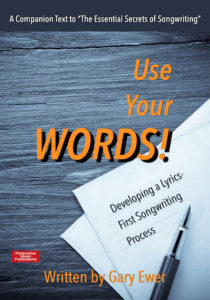If you’re looking for a song that has what amounts to being a textbook definition of a pre-chorus, that song would be Neil Diamond’s “Sweet Caroline.”
The pre-chorus section (“Hands, touchin’ hands/ Reachin’ out,/touchin’ me, touchin’ you”) moves step-by-step higher while the instrumentation builds, the vocal style becomes edgier, and everything gets louder. Those are all typical characteristics of what a song’s pre-chorus is supposed to do.
 If you’re ready to take your songwriting to its highest level possible, you need “The Essential Secrets of Songwriting 10-eBook Bundle.” Get the manuals that thousands of songwriters are using.
If you’re ready to take your songwriting to its highest level possible, you need “The Essential Secrets of Songwriting 10-eBook Bundle.” Get the manuals that thousands of songwriters are using.
In most cases, you could actually remove a song’s pre-chorus, and the end of the verse should connect properly (if awkwardly) to the start of the chorus. In other words, the chords you get at the end of the verse should make a musical connection to the chords of the chorus, and this is the case with “Sweet Caroline.”
But what you’ll notice in songs that have good pre-chorus sections is that there is an unpleasant abruptness if you actually do that. In “Sweet Caroline”, the lowest note of the song is the last note of the verse, and the first note of the chorus is almost its highest one. Here’s a map showing the melodic range of the verse as it jumps to the chorus.

It’s a much better solution to insert a pre-chorus that allows the verse and chorus — including the melodies — to connect more smoothly to each other:

Not all pre-chorus sections are so straightforward, and so don’t make the assumption that all pre-chorus sections must move steadily upward in order to achieve what it’s supposed to achieve: a steady build along with a sensible connection to the chorus.
Sometimes it’s the chord progression itself that provides an enticing connection between the verse and chorus, while the melody itself might actually feature more downward gestures than upward ones, as we hear in “Just Give Me a Reason” (Pink, Jeff Bhasker, Nate Ruess).
You’ll often find that a pre-chorus just comes naturally; it’s not something you’ve thought about, you can just tell that your verse is getting to the chorus too quickly, and you need something in there to extend the time.
But if you’ve been wondering if the problem with your latest song is that there’s too much of a difference between your verse and chorus, and you think a pre-chorus will fix it, here’s what to look for. A song that needs a pre-chorus…
- often has a verse melody for which the end of the verse is an octave or more away from the start of the chorus;
- has a calm verse jumping to a very energetic chorus;
- has a verse that’s very repetitive and/or a somewhat restricted verse range.
And then, of course, once you’ve added the pre-chorus, it should sound natural, as if you suddenly can’t imagine the song without it.
One more tip: there’s no rule or guideline for how long a pre-chorus section should be. As with most things in music, you’ll find that when you’ve got it right, it just sounds right. So don’t be surprised if you find that a weak pre-chorus just needs to be a bit shorter — or a bit longer. Experiment and improvise to see what works best.
 Written by Gary Ewer. Follow Gary on Twitter.
Written by Gary Ewer. Follow Gary on Twitter.
 If you’re trying to make your lyrics a much more important part of your songs, you need to read “Use Your Words! Developing a Lyrics-First Songwriting Process.” It’s part of “The Essential Secrets of Songwriting 10-eBook Bundle.”
If you’re trying to make your lyrics a much more important part of your songs, you need to read “Use Your Words! Developing a Lyrics-First Songwriting Process.” It’s part of “The Essential Secrets of Songwriting 10-eBook Bundle.”










